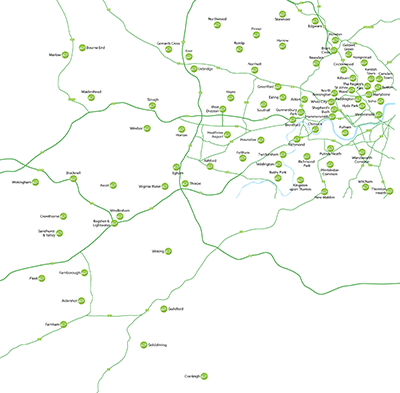West London Pest Control - Ant Control & Garden Ant Treatments in West London
Ants are creatures that have been on the planet for thousands of years. There are many different species of ant found in various countries across the world; some species prefer tropical warmth, whilst others prefer the coolness and more temperate climes of the UK.
Ants scurrying up doorframes, through windows and across counter tops in our homes and business can be unsightly and rather worrying however, the good news is that here in the UK, the species of ant we commonly see are not dangerous to human health. Ants do not carry disease with only a few rare species, not commonly found in the UK, delivering a nasty sting or bite.



Ants and the seasons
Ants are thought to have evolved some 130 million years ago and are loosely related to the wasp. The majority of ants seek out one thing, other than food, in their daily lives: warmth.
In winter, when the heat disappears from both the sun and, to a certain extent, the earth, the ant can be found several feet deep underground, looking for warmth from the earth, as well as each other. Any ants that foolishly venture out in winter will soon succumb to the cold and rain.
However, before thinking of ants as weak creatures, you need to remember that ants are speedy creatures, matching the speed of a greyhound in many cases. They are also industrious workers, capable of carrying many times their own weight in food back to the colony.
As the spring sunshine starts to filter through, ants will start to awaken in the deep underground spaces, hence we will see more ants on the surface. These ants are the worker ants and have been sent on foraging expeditions to bring food back for the queen ant and her eggs.
Any ant ‘infestation’ you comes across will revolve around the location of these queen ant and thus, dealing with the above ground worker ants is not really dealing with the problem. Knowing how and when ants look for nesting sites can help with preventing them, especially from occurring in a property;
- Autumn – it is at this time of year, as the heat of the summer begins to cool that a mated female, soon to be the queen ant of her own colony, begins to look for not only a place to hibernate over winter but also to build her colony in spring. Small cracks and crevices in buildings can make perfect hiding places
- Size – colonies can become too big and when it looks like the colony cannot be supported, sections of it will break way into satellite nests; this effectively means that dealing with a nest may mean that problem re-occurs almost immediately. This is a clear indication that the ant colony is well-established and large.
- Scouting for food – a sight that is common, but possibly one that doesn’t attract your attention too much, is the sight of a lone ant. This ant will have been sent out by the colony with one specific task – to look for a reliable food source. This ant may have found your compost bin or the jam sandwich left out on the picnic table in the garden; it will follow its trail of pheromone back to the hive, alert its fellow work ants and within no time, there will be a well-ordered trail of ants, marching back and forth to this food source carrying back tasty morsels for the colony. Unless they are interrupted, this marching column will continue until all the food has been transported back to the colony.
Dangerous or a nuisance?
Ants in the UK rarely presented nothing more than a nuisance. In some cases, their marching over organic matter outside, and then marching over kitchen work surface can occur and thus dealing with an ant infestation becomes a priority.
Ants are determined and intelligent; when they find a food source they will continue to feed from it until they devour it all, or they are stopped. What can be one of two ants marching back and forth, will quickly turn into hundreds, if not thousands of ants.
The solutions
If you can locate the nest, pouring down boiling water or ant killing powder should do the trick but, ants do not tend to nest where you can either see them or access the colony with ease. Some ants will make their nests in properties – such as in wall cavities – whilst others will make their nests in the garden.
Different species have different habits, thus if you feel under attack from an infestation of ants and are not where the colony is, then calling in a professional pest controller will see the problem dealt with quickly and easily.
Better still, you can be confident that the pest controller will only use insecticides that are safe for use in and around the home. Opt for peace of mind and a professional service for getting rid of ants; call us!








 for W areas
for W areas





